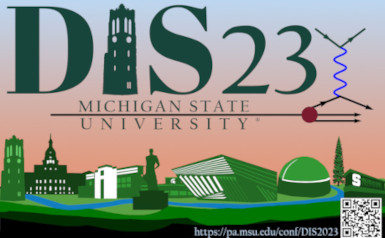Speaker
Description
A new era of hadron collisions will start around 2029 with the High-Luminosity LHC which will allow to collect ten times more data than what has been collected during 10 years of operation at LHC. This will be achieved by higher instantaneous luminosity at the price of higher number of collisions per bunch crossing.
In order to withstand the high expected radiation doses and the harsher data taking conditions, the ATLAS Liquid Argon Calorimeter readout electronics will be upgraded.
The electronic readout chain is composed of four main components.
1: New front-end boards will allow to amplify, shape and digitise the calorimeter’s ionisation signal on two gains over a dynamic range of 16 bits and 11 bit precision. Low noise below Minimum Ionising Particle (MIP), i.e. below 120 nA for 45 ns peaking time, and maximum non-linearity of two per mille are required. Custom preamplifiers and shapers are being developed to meet these requirements using 65 nm and 130 nm CMOS technologies. They shall be stable under irradiation until 1.4kGy (TID) and 4.1x10^13 new/cm^2 (NIEL). Two concurrent preamp-shaper ASICs were developed and, “ALFE”, the best one has been chosen. The test results of the latest version of this ASIC will be presented. “COLUTA”, a new ADC chip is also being designed. A production test setup is being prepared and integration tests of the different components (including lpGBT links developed by CERN) on a 32-channels front-end board are ongoing, and results of this integration will be shown.
2: New calibration boards will allow the precise calibration of all 182468 channels of the calorimeter over a 16 bits dynamic range. A non-linearity of one per mille and non-uniformity between channels of 0.25% with a pulse rise time smaller than 1ns shall be achieved. In addition, the custom calibration ASICs shall be stable under irradiation with same levels as preamp-shaper and ADC chips. The HV SOI CMOS XFAB 180nm technology is used for the pulser ASIC, “CLAROC”, while the TSMC 130 nm technology is used for the DAC part, “LADOC”. The latest versions of those 2 ASICs which recently passed the production readiness review (PDR) with their respective performances will be presented.
3: New ATCA compliant signal processing boards (“LASP”) will receive the detector data at 40 MHz where FPGAs connected through lpGBT high-speed links will perform energy and time reconstruction. In total, the off-detector electronics receive 345 Tbps of data via 33000 links at 10 Gbps. For the first time, online machine learning techniques are considered to be used in these FPGAs. A subset of the original data is sent with low latency to the hardware trigger system, while the full data are buffered until the reception of trigger accept signals. The latest development status of the board as well as the firmware will be shown.
4: A new timing and control system, “LATS”, will synchronise to the aforementioned components. Its current design status will also be shown.
| Submitted on behalf of a Collaboration? | Yes |
|---|---|
| Participate in poster competition? | No |




